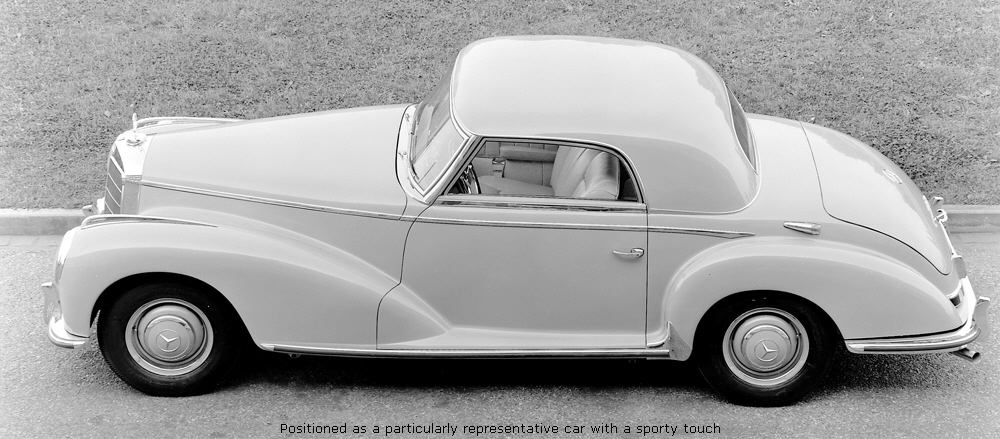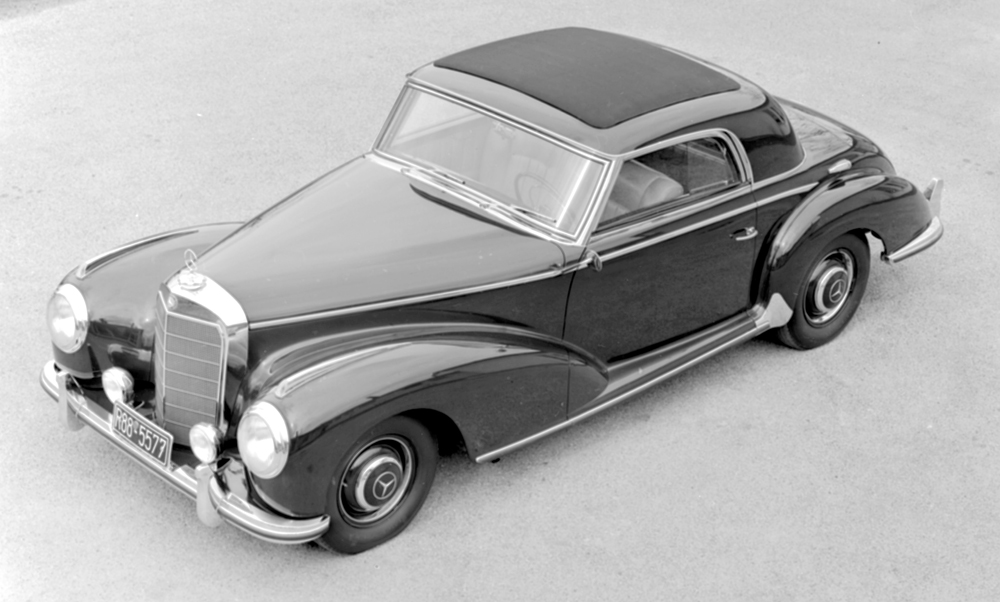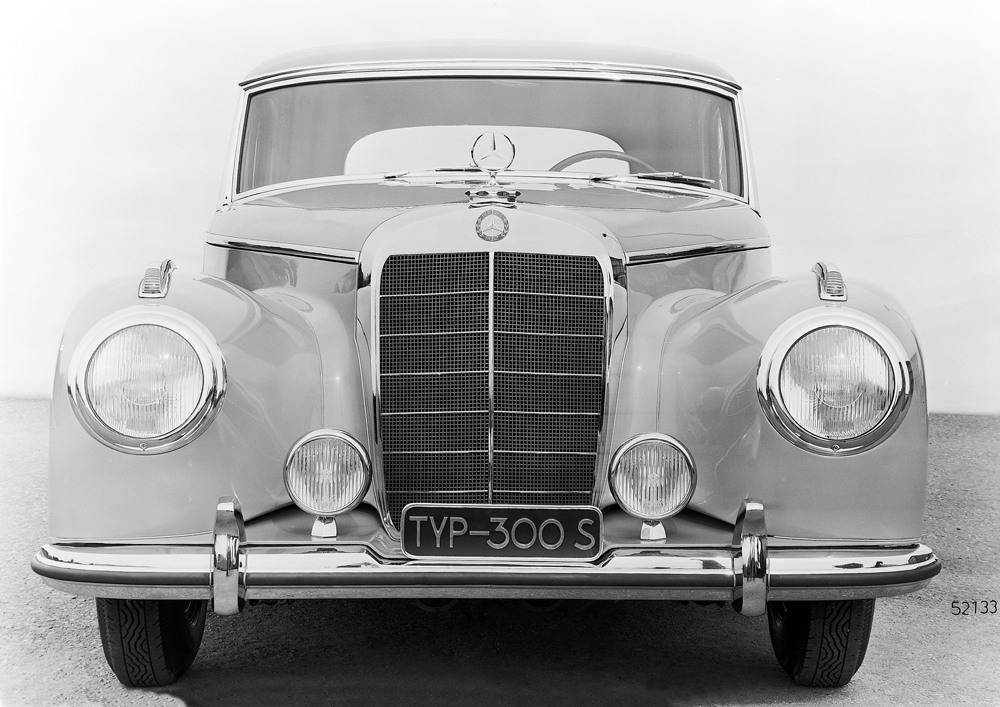|
|
|
Mercedes-Benz W 188 series (1952 to 1958)
In October 1951, Daimler-Benz launched the Mercedes-Benz 300 S at the Paris Motor Show – one month before production of the 300 Saloon (W 186) began. The company thus had two top-of-the-range models in its portfolio. The 300 S was positioned as a particular representative car with a sporty touch – meeting the highest demands made on roadholding, safety and speed. The 300 S met all of these expectations, as reflected by the verdicts of the international motoring press. The latter described the new model as "the car for the world elite" and "the yardstick for what is feasible in contemporary automotive engineering." The press also praised the "traditional and, in this case, particularly noble lines … without resorting to aerodynamic gimmickry." According to the original brochure, the 300 S was a refined car: "The Mercedes-Benz 300 S is a car which will not only inspire the sporty driver but will also make it possible to cover the longest distances in the shortest time and with minimum strain on one's body and nerves." The brochure also enthused about the "composed, elegant lines which harmonize exceptionally well with a modern design." In technical terms, the 300 S was largely based on the Saloon version of the 300 model (W 186) but had a 140 millimetre shorter chassis. Engine output was boosted to 110 kW through an increase in the compression ratio and the fitting of as many as three carburettors, giving the car a top speed of 175 km/h. Alongside the Coupé, the 300 S was also offered as Cabriolet A and Roadster versions. Production of the three variants started between June and September 1952. In total 216 examples of the Mercedes-Benz 300 S Coupé were built during the following four years. Direct injection instead of carburettors At the Frankfurt International Motor Show in September 1955, The bodywork had also been modified in several respects. The 300 Sc had quarterlights next to the side windows as well as larger direction indicators at the front and rear. Other distinguishing features were two horizontal, chrome-trimmed ventilation louvers on both sides underneath the engine hood, as well as chrome strips running all the way from the front to the rear wheel cut-outs. Reference to the more powerful engine was made in the form of the chromed lettering INJECTION ENGINE fitted on the trunk lid underneath the handle. Special suitcases included in the standard equipment In view of all its qualities, the vehicle was the ideal car for travel. Two special suitcases were included in the standard equipment to allow optimum use to be made of the spacious trunk. Two additional suitcases were available at an extra charge; they were accommodated in the rear compartment after the rear seat bench had been folded away – and were ideal for very long journeys for driver and passenger. Despite the technical and stylistic improvements, only 200 units were produced of all three bodywork versions of the 300 Sc Coupé. From early 1957, the customers' interest in this model and its sister models began to dwindle – which is why production of the 300 Sc was discontinued in April 1958. The reasons for this were to a certain extent attributable to the launch of the 300 SL Roadster, which was obviously the more attractive offer for many prospective buyers – being as much as 4,000 Deutschmarks less expensive despite its more contemporary styling and higher performance. With total production figures of just 314 units, the two versions – 300 S Coupé and the 300 Sc Coupé – rank among the most exclusive Mercedes-Benz passenger car models of the post-war period and, like the 300 SL, are highly coveted among classic car enthusiasts.
Fresh air when desired: Mercedes-Benz 300 S (W 188 series, 1951 - 1958) with folding top, a popular contemporary option.
A face full of character: The Mercedes-Benz 300 S (W 188 series, 1951 - 1958) ranked among the most exclusive cars in the world in the 1950s.
|
|
Home < Mercedes-Benz < Mercedes-Benz Cars < Historical Models < 1959-1946
|


